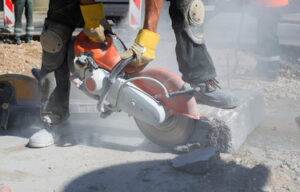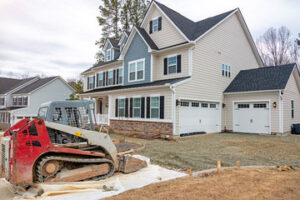Concrete patios are a cost-effective choice that offers homeowners the versatility and durability they desire in their outdoor living spaces. Contact Concrete Patio Columbus Ohio for professional help.

Homeowners can add to the appeal of their concrete patio with decorative options that include stamped patterns, staining, or unique finishes. Additional expenses may include costs for site preparation, permits, and ongoing maintenance.
Concrete is a versatile material that can be formed into an array of shapes and colors to match your home and landscaping. It also has great design potential and is a cost-efficient choice for a patio. It’s a durable material that stands up to harsh weather conditions like scorching sun and snowy winters.
With the help of a skilled concrete contractor, you can customize your new patio and make it uniquely yours. For example, concrete can be textured to resemble bricks, slate, flagstone or wood. There are also a variety of patterns you can choose from that add character and charm to your space. For instance, cobblestone patterns can give your patio a rustic feel, while geometric designs offer sleek, modern style.
Concrete can be stamped, dyed or stenciled to create a variety of different textures and styles for your patio. This versatility gives you the ability to create a unique outdoor living space that fits your personal style and the architectural elements of your home.
Aside from the visual appeal, a concrete patio has several practical uses and is suitable for any outdoor lifestyle. For example, you can use a concrete patio as a platform for your hot tub, pool or outdoor kitchen. This helps you keep your kitchen and backyard separated from each other, preventing the smell of cooking and smoke from wafting into your house. It’s also a good option for those with mobility issues as it provides a level surface that’s easy to walk on.
A well-designed patio will also include a path from the driveway to your patio, as well as a seating area or fire pit. You should plan for these features in your design process so that you can install the necessary infrastructure to accommodate them. For instance, you’ll need plumbing and drainage for a pool or outdoor kitchen. You may also want to consider electrical requirements for a fire pit. Once you’ve planned for these amenities, your backyard will be ready to host the summer parties and barbecues your family loves.
Durability
Concrete can stand up to severe weather conditions, which makes it a popular material for patios. However, it can crack or chip if the soil underneath shifts. Concrete contractors prevent this by placing a 1/2×4-inch expansion joint between the concrete pad and the foundation of the house. They also place rebar in the slab to strengthen it and add structural stability.
Concrete is also very durable and can be stained to enhance the look of your patio. There are several types of stains, including acid-based and water-based. Acid-based stains offer natural color variations that can mimic marble or granite. They come in a variety of hues, including tans, browns, and terra cottas. Water-based stains have a broader spectrum of colors and can be molded into various textures to resemble other materials, such as wood or stone.
Poured concrete is stronger than pavers or brick, so it doesn’t sag or wear away as easily. Concrete contractors often use steel rebar to reinforce concrete slabs for added durability. They may also install a form in the slab to make it a little wavy, which helps reduce surface cracking. Whether you choose a stamped or plain concrete patio, it will last a long time with regular maintenance.
A concrete patio is a great option for a pool deck, outdoor kitchen, or fire pit. However, it’s important to design your concrete patio to fit the amenities you plan to use it for. For example, if you’re going to have an outdoor kitchen, you should make sure the patio is big enough to accommodate it. You’ll want to consider plumbing, draining, and electricity as well.
While a concrete patio is a practical choice for any home, it’s not the best option for every property. Concrete is a relatively hard surface, which can cause painful injuries if someone falls on it. It’s also less forgiving than pavers or wood, making it harder to bounce back from a fall.
The versatility of concrete gives it a leg up over other materials. It can be shaped and textured to look like other kinds of material, so you can enjoy the aesthetics of your backyard without having to deal with the hassle of maintenance.
Low Cost
A concrete patio is a great option for homeowners who want to add value to their property. It’s more affordable than pavers and other natural stone options, making it a practical choice for those with tight budgets. In addition, a concrete patio is easy to maintain and durable enough to last for years without much upkeep.
Because concrete is a solid material, it can be formed into different shapes to suit any backyard. For example, you can make it into a circle, oval, or rectangle to fit your space perfectly. It can also be poured to form steps or ramps, which makes it easier for people with limited mobility to access your backyard. You can also combine it with garden beds or winding pathways to create an inviting design that makes the perfect backdrop for family BBQs or that first cup of coffee in the morning.
The price of a concrete patio depends on the thickness of the slab, finishing options, and labor costs. A basic 4-inch thick concrete slab costs around $6 per square foot, but the price will go up if you choose a more detailed finish or additional designs. To calculate how much concrete you need, divide the patio’s length by its width and then multiply that number by the thickness of the slab in feet.
In addition, the price of a concrete patio can depend on where you live and your local supply providers. Demand and access to materials can impact prices on a regional basis, so it’s important to get quotes from multiple contractors before committing to a project.
Concrete is a very versatile material, and the skills of a good concrete contractor can transform a simple slab into a gorgeous outdoor living space that rivals the look of a natural stone patio. Concrete contractors can stamp, stain, and texture the concrete to create a unique look that suits your backyard. They can also add curves or specific patterns to the concrete, giving it a more personalized touch.
In addition, a concrete patio is less expensive than a brick paver patio. The long lifespan and durability of a concrete patio can save you money in the long run by eliminating the need to repair or replace your backyard pavers frequently. This durability also helps to protect your home’s landscaping and reduce the risk of erosion.
Easy Maintenance
Concrete is a tough material, and it can resist the wear and tear of many different elements. However, regular maintenance is essential to ensure the longevity of a patio. Proper maintenance includes cleaning and sealing the patio. This is done to prevent stains, protect the surface, and reduce cracking. It is also important to ensure that the proper tools and materials are used for cleaning. Choosing the right products can save you time and money.
Sweep the patio regularly to remove dirt and debris. Wash the concrete with a garden hose and a nylon brush when it gets dirty. A power washer can be used to clean the patio, but it must be used with care as too much pressure can cause pitting of the surface.
Using a degreaser can help to loosen and dissolve oil or other types of stubborn stains. A concrete cleaner made for masonry surfaces is an excellent choice for removing stains from a concrete patio. Muriatic acid can also be used to remove mineral, oil, and rust stains from a concrete patio. However, it must be handled carefully as it is dangerous and can kill grass and plants.
To keep the concrete patio looking new, apply a penetrating sealer that is designed for concrete. A quality sealer will protect against moisture, stains, and freeze-thaw cycles that can damage concrete. This will help the concrete last longer and maintain its color.
Other things that can affect the longevity of a concrete patio include how snow and ice is removed and the use of harsh chemicals. Ice melters that contain sulfates or ammonium nitrates can corrode the concrete and eliminate its sheen. These chemicals are especially damaging during the first winter after the concrete is installed.
When a patio is being built, it can be helpful to create control joints that will be reinforced with rebar when the concrete is poured. This will prevent cracking as the ground shifts and can reduce the number of times that the patio must be repaired. It is also a good idea to install a root barrier around the patio to keep tree roots from growing under and lifting the concrete.

